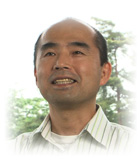This is an archive of information released in the past.
Disclaimer: It may contain broken links or outdated information. Some parts may not function in current web browsers.
*Visit https://humans-in-space.jaxa.jp/en/ for the latest information.

Experiment
- News
- Kibo Utilization Strategy
- Kibo Utilization Plan
- List of JAXA's Utilization Themes
- Experiment Facilities
- Space Environment Utilization
- Archive
To investigate the possibility of preserving genetic resources in space
Effect of space environment on mammalian reproduction (Space Pup experiment)
![]() TOPICS:
TOPICS:
- Easy-to-understand lesson on space experiments: Space Pup experiment
Pikaru, a member of the investigation team for the space experiments, interviews the Doctor to closely analyze the Space Pup experiment. - Space experiment preparation report
On the ground, the Principal Investigator, research group members, and JAXA’s staff are making steady preparations for the space experiment. Recent developments are posted with pictures.
- Background
Although many studies on mammalian reproduction under microgravity conditions in space have been attempted with mice so far, few results have been obtained. In this experiment, as a first step to investigate mammalian reproduction in space, mouse spermatozoa will be preserved for a long period of time in space, exposed to microgravity and cosmic radiation, returned to Earth, and used to produce offspring by external fertilization. - Objective
We will examine whether mammalian germ cells can be preserved in space for a long period of time, to determine whether or not mammals, including human beings, can thrive in space. - Outline of the Experiment
Spermatozoa freeze-dried on the ground will be sent to space, stored in a freezer for a certain period of time, returned to the ground, and used for fertilization under a microscope. The space sperm will also be examined for fertility, effects of radiation, DNA repair rate, normalcy of early development, and most importantly, the birth rate of mouse pups. - This is the Point!
Results of this experiment will be applied to projects for conservation of genetic resources in various species; to the breeding of high-quality livestock, which is an important theme in thremmatology and animal husbandry; conservation of species of profitable experimental animals; and conservation of germ cells.
This experiment started in August 2013, after delivery of sample cases to the International Space Station (ISS) by KOUNOTORI4, the fourth H-II Transfer Vehicle (HTV4).

Teruhiko WAKAYAMA
Department of Biotechnology, Faculty of Life and Environmental Sciences, University of Yamanashi
Professor
Area of Research: Applied animal sciences (research on somatic cell cloning technology)
| Copyright 2007 Japan Aerospace Exploration Agency | Site Policy |
